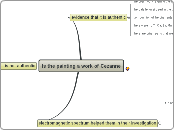por caroline fouad hace 15 años
320
Cezanne
Scientists conducted an in-depth analysis to determine the authenticity of a painting attributed to Cézanne. They examined various elements, including the palette knife technique, the bright parts of the painting, and the style of brushwork, which were consistent with Cézanne'









